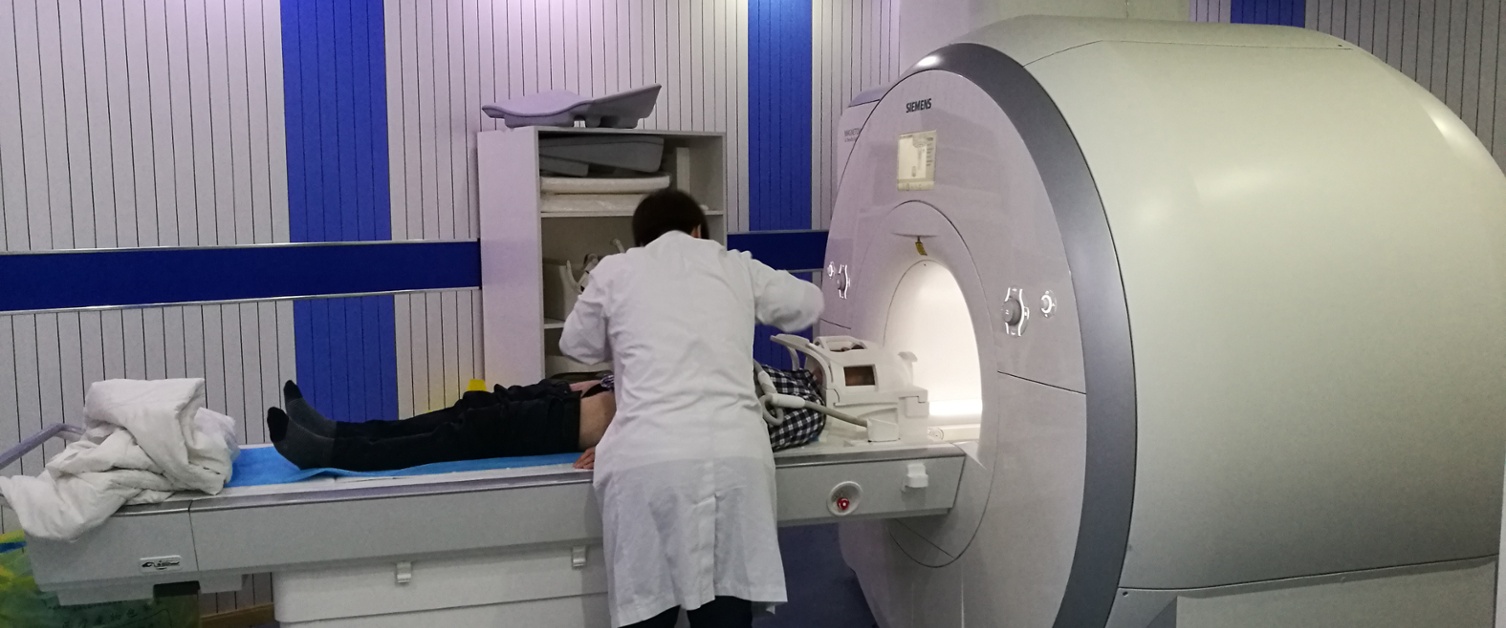MRI Scan

What is it?
Liver disease has many causes, sometimes it can be caused by problems with the liver tissue being inflamed (e.g. Hepatitis), the blood supply to the liver being altered (e.g. Portal Vein Clots) or problems with the bile ducts (e.g. Primary Sclerosing Cholangitis).
You can also have abnormal areas in the liver such as cysts, patches of abnormal blood vessels (haemangioma) or growths in the liver such as liver cancer.
An MRI scan uses magnets to create detailed two dimensional and three dimensional images of certain structures. It tends to focus on one specific area, such as liver tissue or bile ducts (known as an MRCP).
What do I need it for?
An MRI or MRCP is usually performed to get further detail about a structural abnormality identified on other tests such as ultrasound scan or CT scan, such as an abnormal lump in the liver or a swelling of the bile ducts.
An MRI scan is usually a diagnostic test but can be used to monitor the progress of your liver disease in certain conditions, particularly those affecting bile ducts such as Primary Sclerosing Cholangitis.
How is it performed?
An MRI scan takes place in the radiology department and is performed by a specialist known as a radiographer.
You may be asked to be “Nil by mouth” for a period of time before the study.
You will be asked a series of questions before going into the scanner, these include asking about any devices you have in your body (such as a pacemaker) any metalwork (such as a hip or knee replacement) and whether you have had any metal in your body for other reasons (e.g. previous job as a welder). These are important questions and you may be asked them several times at different stages in the process of arranging the test.
You will then be asked to change into a hospital gown and remove any metal work from your body.
Some MRI scans require a dye (known as contrast) to be injected. This is done by inserting a tube, sometimes called a cannula, into one of your arm veins, which will be done before the test.
You will be asked to lie flat on the couch and keep still. You may be required to take deep breaths at certain points in the procedure, instructions will be relayed to you via a loud speaker in the scanner.
The scanner is a tunnel which is well lit with plenty of air. In some departments music or headphones may be provided during the test. You will be given an alarm button to press if you feel distressed and wish to stop the procedure at any point. The test itself can be noisy with whirring and banging sounds at some points.
The test usually takes 10-30 minutes depending on the area being scanned.
After the test there are no special instructions to follow, you can continue as normal.
How will I receive my results?
The MRI images will be sent to a radiologist (a doctor specialising in these tests), who will review the images and create a report on the findings.
The report will be sent on to the doctor or nurse who requested your test, who will be able to interpret it along with the medical history, blood tests and any other results. No single test will diagnose the cause and extent of your liver disease.
In some cases we may not be able to get the required information from the MRI scan. In this instance the information will be passed onto the doctor or nurse who requested the test for them to decide the best next steps.
Will I need repeated tests?
Depending on the underlying cause of your liver disease, you may be required to have repeated MRI scans to monitor your disease. This will be discussed with you by your nurse specialist or doctor.
What if I do not want the test?
An MRI scan is a non-invasive test that can give us a good idea of the structure of your liver, however, it can be noisy and some patients suffer claustrophobia or anxiety with this investigation. It is your choice if you do not wish to have the test.
You should discuss alternative options with your doctor or nurse specialist, these may include other ways of taking images of the liver, blood test monitoring or a liver biopsy. Alternative options will depend on the cause of your liver disease and the reason for performing the test.